
views
X
Trustworthy Source
Mayo Clinic
Educational website from one of the world's leading hospitals
Go to source
Once you’ve gotten back in the hula swing, you can mix it up and learn some more difficult routines for a varied and exciting workout.
Mastering the Basics
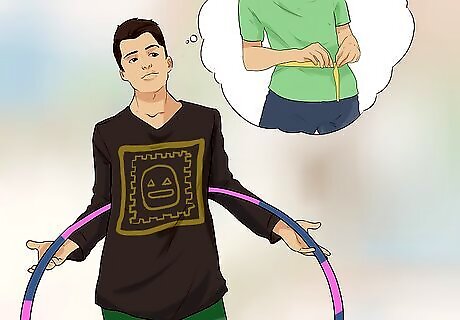
Identify manageable goals. While hula hooping is a great way to get some extra aerobic activity and tone your muscles, it can’t replace all other aerobic activities or compensate for inadequate strength training. Use hula hooping instead as a way to spice up your workout regimen, or to target some “problem areas” you’ve been wanting to tone. For example, hula hooping can effectively tone ab muscles and slim your waistline, or it can tone and strengthen thigh and hip areas. A 30-minute session of hula hooping can burn 165 calories for a woman and 200 calories for a man.

Pick a hoop that stands from the floor to your belly button. You might be tempted to grab your child’s hula hoop out of the garage or resurrect your own childhood hoop, but chances are these toys won’t work for your purposes. Find one that, when placed in front of you, stands from the floor to your navel. The wider the hoop, the easier it will be to swing and get going. Also remember to take your waist-size into consideration. If you’ve got a wider waist, you’ll need a hoop with a wider circumference.
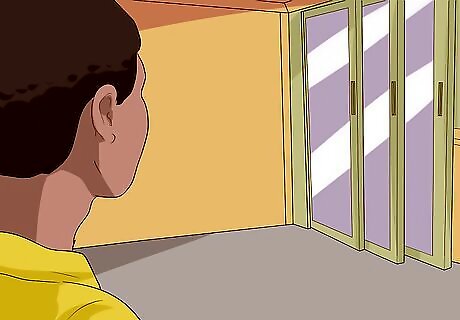
Find an open space where you can move comfortably. Hula hooping requires minimal supplies and investment, but no matter what you’ll need a space—indoors or out—where you can swing your hoop without obstruction. Look for a spacious room or a corner of your yard where there are no trees, pillars, or furniture which could snag your hoop and impede movement. If storage space is an issue, you can find a retractable or inflatable hoop that will take up less space in your house or yard. The bigger the space you find, the more opportunity you’ll have to expand your hula routine and make it into a more advanced workout which integrates other exercises such as lunges, walking, or crunches.

Press the hoop to the small of your back. Standing in the open area, step through your hula hoop and place the hoop flush to your back, slightly above your hips. As you stand with your feet side to side or with one foot slightly in front of the other, you can adjust the hoop’s height on your waist to the place where it feels most comfortable or natural. Your feet should be about 15 – 20 inches (about 38 – 50 centimeters) apart.

Push the hoop in the direction that feels right. As you become more advanced, you’ll be able to hula hoop in any direction you please, but for now you should swing in the direction that feels most comfortable. Usually, right-handed people find that they prefer to swing in a counterclockwise direction, while left-handers go clockwise, but ultimately it’s a matter of personal taste. Be sure that you’re not pushing down or up at the same time as you’re pushing to the side. Any vertical slant to your hoop’s swing will make it more difficult to swing and maintain height.

Shift your weight from one foot to the other. Once your hoop is in motion, rock your weight gently from one foot to the other while bending your knees slightly. This leg movement is actually what keeps your hoop in motion. So, rather than thinking of hooping as a circular, hip-generated movement, think of it as a lateral, pumping motion. While concentrating on your legs and hips, be sure to hold your arms above your head or at least at shoulder-level. Swinging your arms or dropping them will affect your balance and impede your hula hooping.
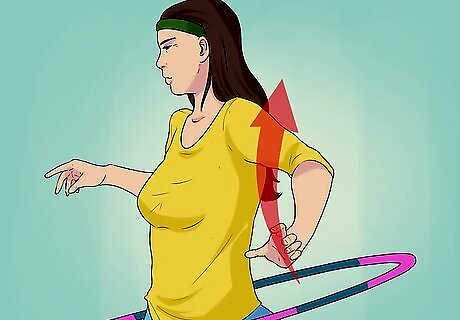
Keep your back erect and abdominal muscles tight. As you’re hooping, be mindful of your posture and muscular activity. Your spine should be straight as you maintain the hoop’s motion, and your core should be firm rather than relaxed. This will tone your stomach and back, as well as improve your posture in everyday life. Some hooping enthusiasts recommend practicing yoga or dance as a way to improve hooping skills, posture, and relevant muscle groups.
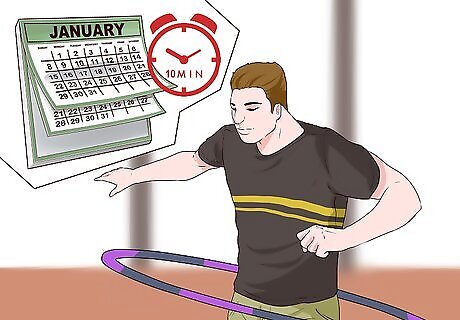
Repeat for 10 minutes a day every day. Advanced hula hoopers can work out with their hoops for hours on end, but you’ll need to build your stamina and skill as a beginner in order to get to this level. Do so by using your hula hoop for 10 minutes a day, every day, for a week or two. Once your stamina improves, you should strive to hoop for thirty minutes at a time.
Trying Out New Workouts
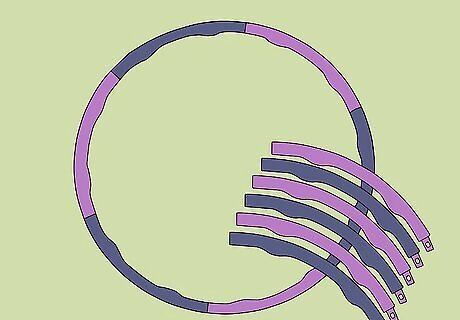
Buy a weighted hula hoop. While any hula hoop will get you up and moving, weighted hula hoops can be particularly useful additions to your workout regimen. They’re bigger and heavier than the garden variety hoop, meaning that they provide greater resistance and make your workout more vigorous. You can find weighted hoops at most sporting goods stores, or you can check out options online through mass retailers like Amazon and eBay.
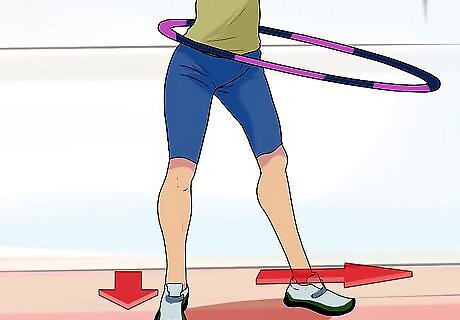
Experiment with different stances. Once you’ve gotten comfortable with a particular stance as you hula hoop, try switching up your foot position to work different muscle groups. In the forward stance, for example, you stand with one foot in front of the other. In the side stance, you plant your feet at shoulder-width or slightly wider. You’ll find that your abs and legs are put under different stress as you hoop in different stances. Focus on keeping your abs tight and your chest and head lifted in order to maintain good posture and get the most out of your workout.
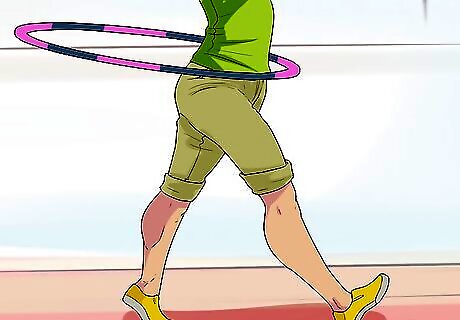
Try walking while hula hooping. Hula hooping is already aerobic exercise as long as you do it continuously, but walking while hooping will burn even more calories. Once you can easily switch between different stances and hoop continuously for 10 – 20 minutes at a time, you can try it out. Start in forward stance and then take a mini-step forward. Keep your posture erect and stay mindful of your head, neck, chest, and ab position. If this exercise gets too easy, try walking in different directions! To walk to the side, start in side stance and begin inching to the side until you feel comfortable taking larger strides.
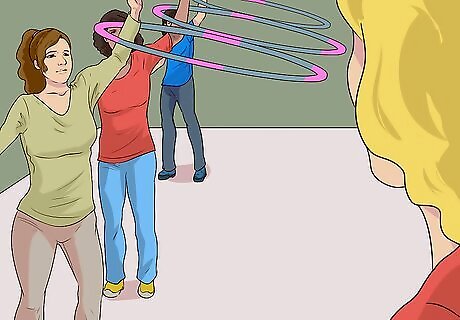
Sign up for a hula hoop class at your local gym. Hula hooping is an easy exercise to do solo, but you can also take a class in order to learn new workouts and fancy tricks. Your instructor can give you pointers on posture, as well as show you how to target specific areas on your body that you’ve been wanting to tone. If your local gym doesn’t offer hooping classes, try searching online for hoop gatherings or one-on-one freelance instructors in your area.

















Comments
0 comment